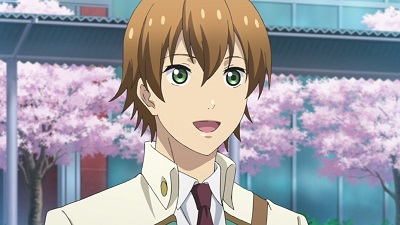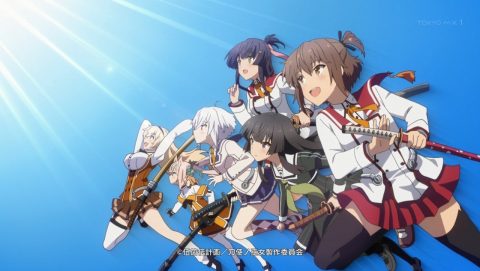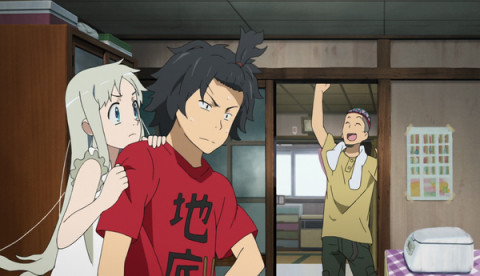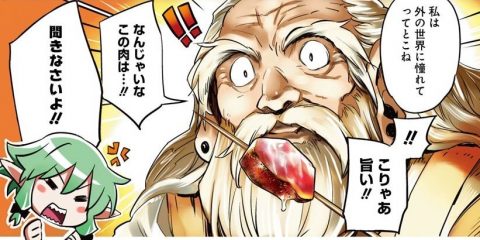The ninja adventure romantic action drama "Hell's Paradise" will soon be aired as an anime. The story is based on the Yin-Yang and Five Elements philosophy, which has its origins in China, and because it is a period piece, I believe that, unlike recent stories of reincarnation in another world, you will be able to enjoy the work more if you have some prior knowledge in order to understand the gist of the story, and that is why I am writing this article. Of course, it is a work that can be thoroughly enjoyed even if you know nothing about it, but I believe that with any story, you will be able to enjoy it more if you have some knowledge rather than knowing nothing at all. Although, maybe thinking this way is itself a bit nerdy lol. Well, as the saying goes, "knowledge is pleasure," and I believe that there is no harm in knowing any knowledge. So, I hope you will bear with me for now.
Yamada Asaemon
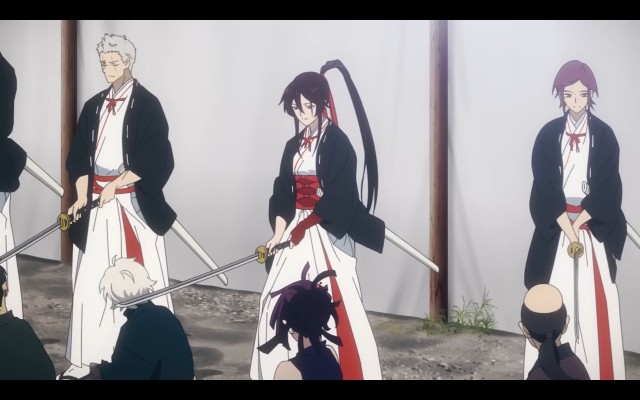
This is Sakichi's family, a clan that has specialized in beheadings and test cuts for generations. "Yamada Asaemon" is the name used by the head of the family and also serves as the family name. They practice the Tameshi Itto-ryu sword school, and Shien, Tsukechi, and Senda are his disciples. The model for this character is the real-life "Yamada Asaemon," a clan that existed during the Edo period and who specialized in beheadings. The Yamada Asaemon family depicted in the story was not hereditary; they were nicknamed "Assassin Asa" and "Head-cutting Asa"; they were under the control of the Koshimono Bugyo (magistrate) but were treated as ronin by the shogunate and did not receive a fixed salary; their side jobs included sword appraisal, sword test cutting using corpses, pharmaceuticals made from corpses, and even selling the little fingers of corpses for engagement as prostitutes; all of these are based on anecdotes from the real Yamada Asaemon.
Useful for the Emperor
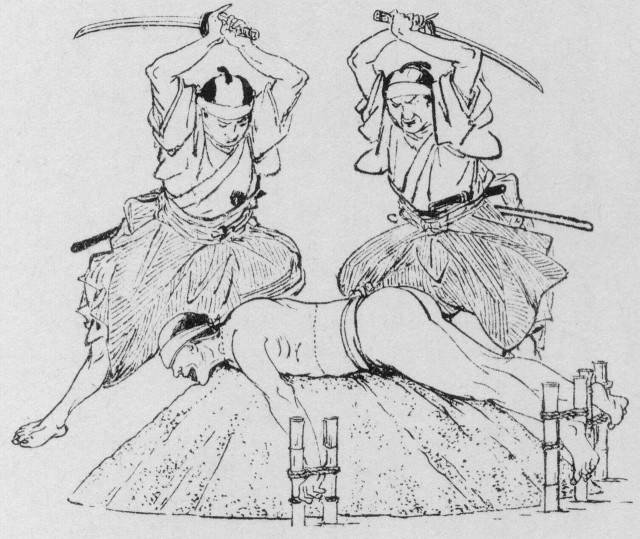
In "Hell's Paradise," this refers to the beheadings performed by Yamada Asaemon, but originally the term referred to "sword test-cutting." In the early Edo period, this was called "ikitasashi," and criminals sentenced to death were used alive to test swords. Since the historical Yamada Asaemon emerged in the early Edo period, it's entirely possible that he was also practicing "ikitasashi." Later, corpses were used for test cuttings, but they also began to be requested to behead those sentenced to death. This became the occupation of the Yamada Asaemon clan, who are responsible for the executions in "Jigokuraku."
Iwagakureshu
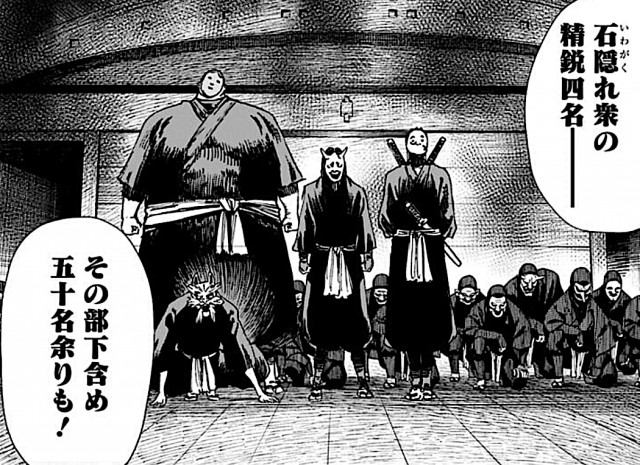
This is one of the ninja villages in Iga Province, and each of its members possesses superhuman martial arts skills. Gamimaru was the ninja who reigned supreme, but when he tried to escape, he was caught in a trap set by the village chief and captured. Men are forced to undergo life-risking training from a young age, many of them die in the process, and once they become full-fledged ninja, they are required to sacrifice their lives as a "swarm" like ants or bees, without any individual will, and women are forced to marry once they reach a certain age, and are consumed solely as tools for producing children - it's a harsh environment. No wonder it's hard on the mind.
Public Pardon (Kougi Gomenjyo)
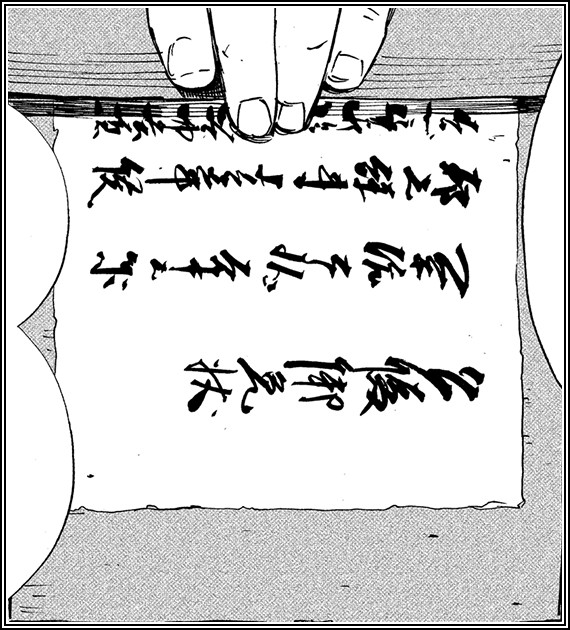
This scroll of pardon issued by the shogunate allows any person sentenced to death, no matter how heinous the crime, to be acquitted and set free. It appears to be a gift bestowed by the shogun himself. At the beginning of the story, Sagiri holds up a copy of the official pardon scroll in front of Gamimaru, but it's unclear whether it's genuine. In fact, given the storyline, it would be unnatural for Sagiri to have the real thing, so perhaps it has "sample" written in large letters somewhere out of sight. Well, I don't know.
Qi (Tao)
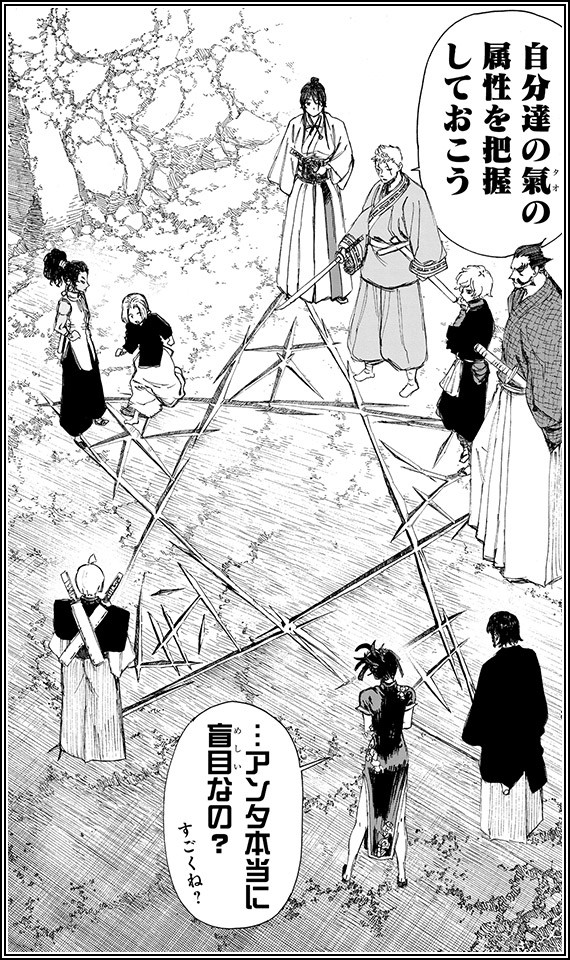
Qi is a force that exists throughout all living things, a vibration-like force that exists not only in animals and plants, but also in inorganic matter such as the air and buildings. The blind Shiyuan perceives this qi to understand the outside world. Qi has attributes and is classified as wood, fire, earth, metal, and water. Furthermore, it is said that all things have yang qi and yin qi, and yin and yang exist in a constant cycle. The idea of classifying qi into yin and yang and the five elements of wood, fire, earth, metal, and water originates from the Spring and Autumn Period and Warring States Period in China. By the way, the character "ki" (energy) is used for "Tao" because Kagome refers to this sensation as "ki," and judging from the sound, it seems likely to be "way."
Mutual Generation (Soushou) / Mutual Destruction (Sokoku)
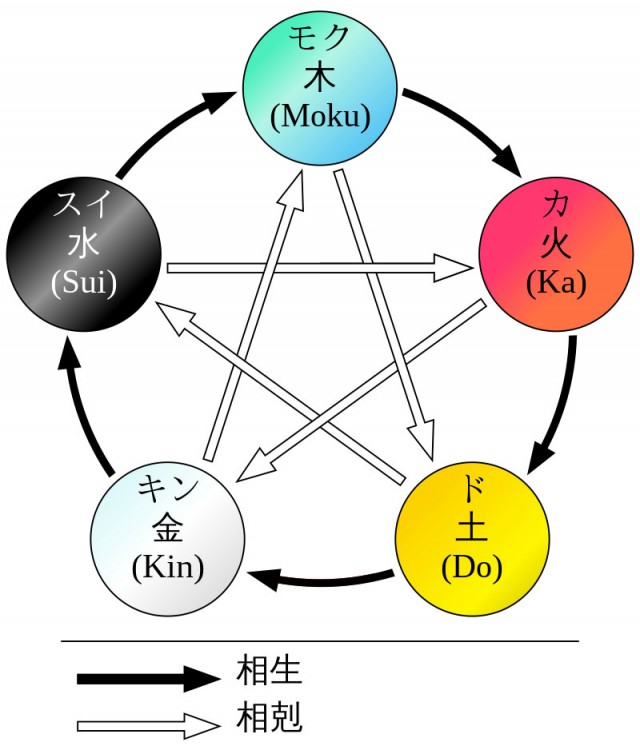
To put it very simply, "mutual generation" is a "yang" relationship that strengthens the opponent, while "mutual destruction" is a "yin" relationship that weakens the opponent. Mutual generation is represented by "wood produces fire," "fire produces earth," "earth produces metal," "metal produces water," and "water produces wood." The preceding ki strengthens the following ki. The mutual destruction is as follows: "Wood overcomes Earth," "Fire overcomes Metal," "Earth overcomes Water," "Metal overcomes Wood," and "Water overcomes Fire." The leading energy weakens the trailing energy.
Island (Kotaku)
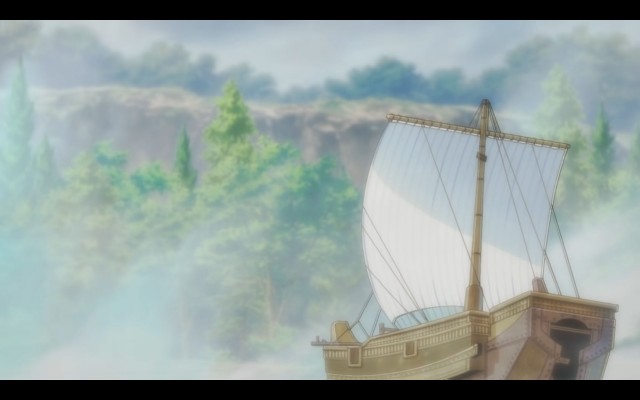
Located further south than the Ryukyu Islands, this island is said to contain the elixir of immortality, and is where Gamimaru and the other death row prisoners, along with Sagiri and the rest of the Yamada Asaemon clan, were sent. While Gamimaru and his men simply call it "Island," the island's residents, the "Kokujin," call it "Kotaku." It's unclear what kanji character corresponds to this. It is a supernatural and demonic realm where colorful flowers bloom haphazardly and human-faced butterflies and strange monsters roam rampant, and in Senta's words, the environment is like a "poorly drawn and tasteless mandala." The island is divided into concentric areas, from the outside in "Eishu," where gate gods and poisonous insects reside, "Hōjō," where wooden men and hearth gods reside, and "Hōrai," in the center of the island, where celestial immortals live.
Wooden Man
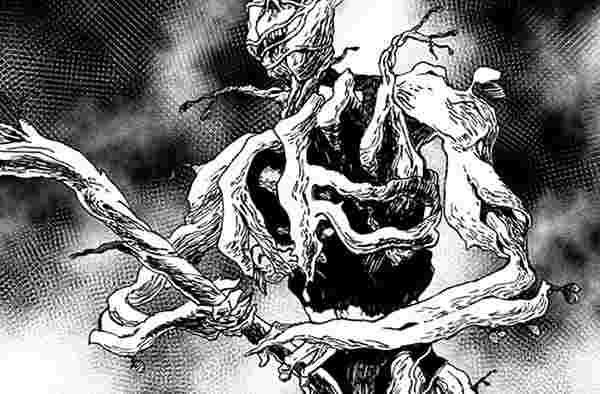
A tree-like creature resembling the Ents from The Lord of the Rings. Approximately human-sized, and despite their bizarre appearance, their intelligence and attack power are similar to humans. They once lived in a village in the central area of the island, but all the villagers were transformed into trees, making the current wooden man the last surviving. It is said that they originally had a human form.
Monshin
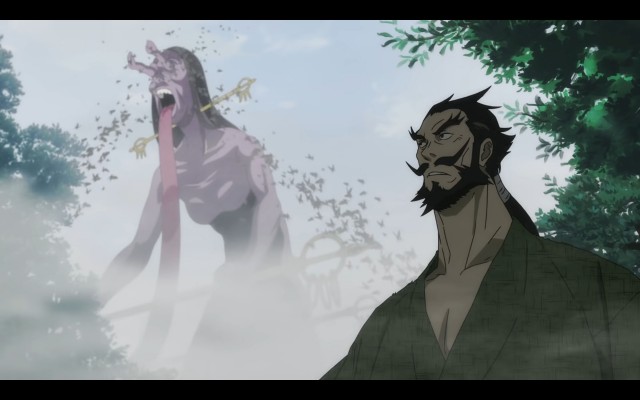
This giant monster guards Eishu, the outer periphery of the island. Its distinctive features include arms growing from both eyes and an unusually long tongue. Due to its enormous size, it has high offensive power, but it possesses almost no intelligence and moves as if programmed to eliminate intruders. It appears to be treated as livestock in the island's hierarchy.
Soushin (Heart God)
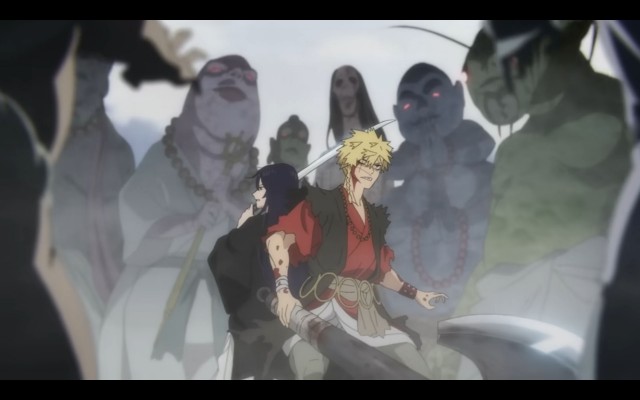
This strange monster roams the Hojo, the central area of the island. Its bizarre appearance, a mix of human and animal/insect parts, attacks any humans who enter the island in an attempt to eliminate them. It carries a rosary, a whisk, and a shakujo (a Buddhist staff), and utters phrases like "Killing is a sin," but it is not particularly intelligent.
Doushi (Taoist Priest)
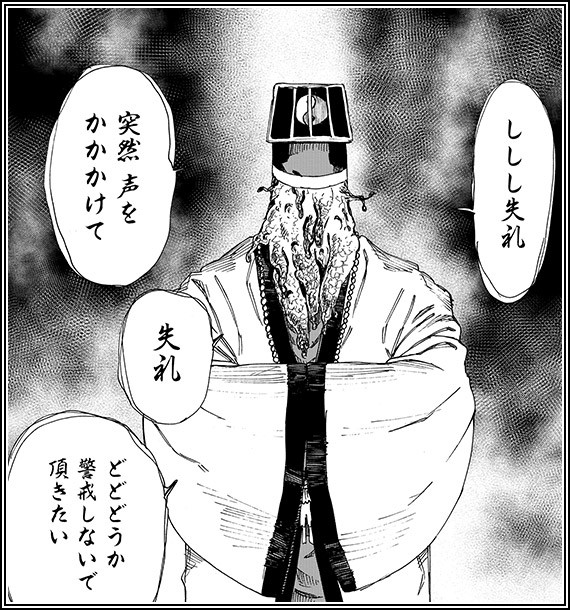
These strange, human-sized creatures take care of the celestial immortals. Despite their bizarre appearance, they are intelligent and capable of conversation. They also use ki in combat against enemies. They are only male. There appears to be a hierarchy: divine immortals, superior immortals, earth immortals, and Taoist priests.
Tensen (Heavenly Immortals)

These seven immortals rule the island, ranking at the top of its hierarchy. They conduct research into immortality, and the island was created as a testing ground for this research. All seven share the same face and voice, instantly recover from injuries so severe they lose their limbs or necks, and can freely switch between male and female forms. Each has their own research theme, studying external alchemy, the art of lovemaking, Zhoutian (Qigong), Taiqi (breathing), Doin (exercise), and Shuichi (meditation).
Kishikai (Demon Shikai)
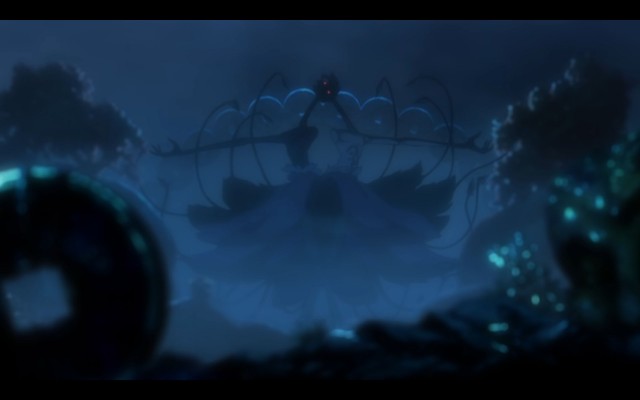
When celestial immortals receive a certain amount of damage, they transform into a gigantic monster that resembles a hybrid of plant and human. In exchange for consuming a large amount of ki, their combat power is significantly increased compared to their human form. It's like the final form of an area boss.
Tan
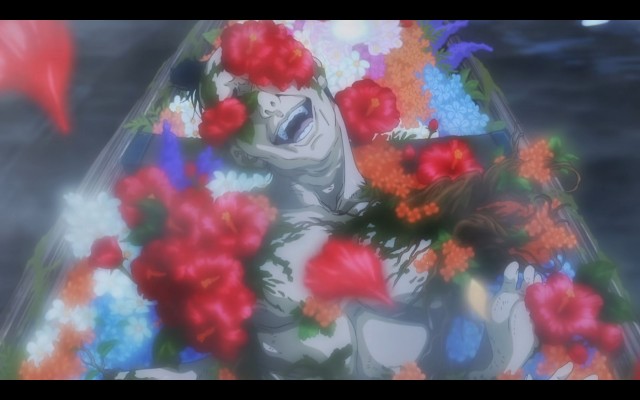
This is a substance that transforms humans into flowers and efficiently extracts their life energy, or ki. By drinking this elixir, the celestial immortals extend their lifespans, maintain their youth, and gain incredible healing abilities. It can be said to be the source of their survival, but the celestial immortals are conducting research with the goal of developing the ultimate elixir that will grant them complete immortality. The "elixir of immortality" said to be found on the island refers to this elixir, but if an ordinary human were to ingest the elixir, they would turn into a flower.
Conclusion
What did you think of this "Hell's Paradise" glossary? I've tried my best to explain important terms and technical terms that appear in the story while avoiding any fatal spoilers, but unfortunately, there's a risk that anything I say will lead to spoilers lol. If this article helps you enjoy Jigokuraku more deeply, I would be extremely happy.

